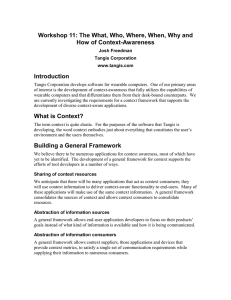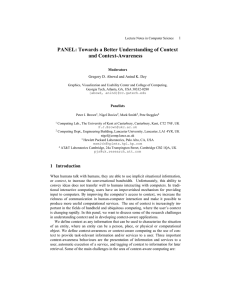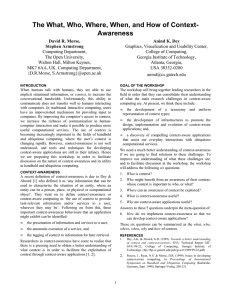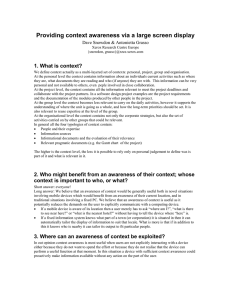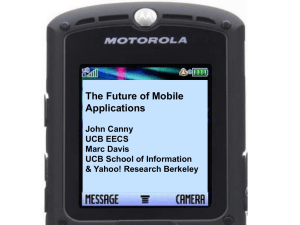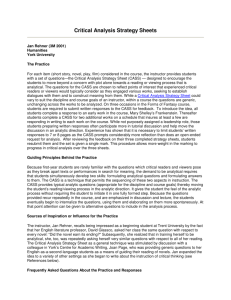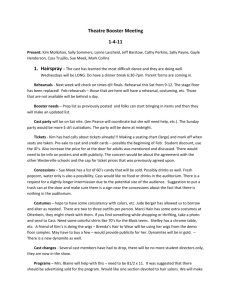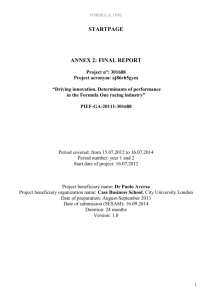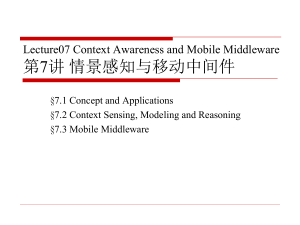Context-Awareness on Mobile Devices * the Hydrogen Approach
advertisement
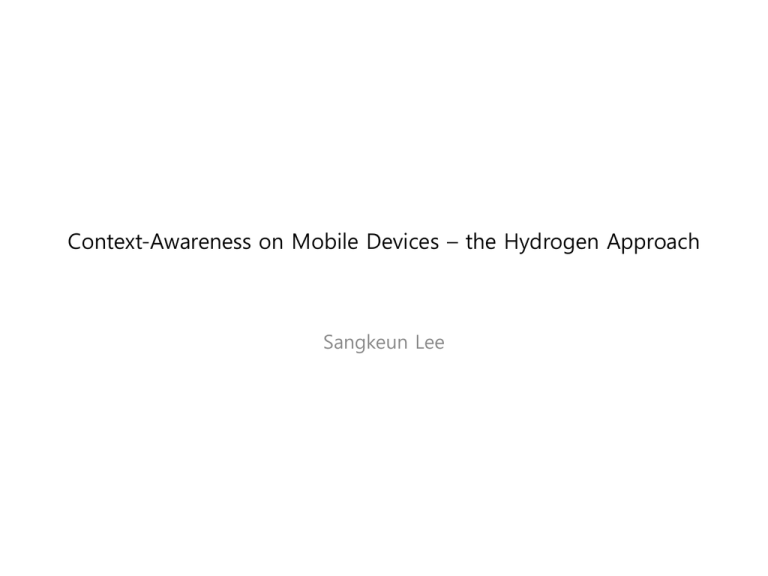
Context-Awareness on Mobile Devices – the Hydrogen Approach Sangkeun Lee Context-Awareness for Mobile Devices • Support context-awareness for considering – Special requirements of mobile devices regarding the limitations of network connections, computing power • Requirements for an architecture of a framework to support context-awareness on mobile devices – – – – – Lightweightness Extensibility Robustness Meta-Information Context-Sharing • Separiting the concerns of context sensing from the application is needed Hydrogen Context-Framework • Three architecture – Application Layer – Management Layer : Context Server • Provide simple methods for the applications for retrieving or subsribing to a context – Adaptor Layer • Responsible to get information from sensors – Reusability, Exchangeability of sensors & adoptors Implementation – the Hydrogen Approach • Prototype Implementation – PersonalJava virtual machines Jeode, J2ME, iPAQs, PocketPC 2002 • Context – Time, Location, Device, User, Network • ContextClient – Responsible for communication : open ports, queries data • Context Server – Java Executable object – Communication in two forms : XML-streams, serialized Java objects • Extensibility – toXML(), fromXML() • Open Issues – Comprehensive Context Model – XML Protocols – Context Sharing CASS- Middleware for Mobile Context-Aware Applications Sangkeun Lee General • CASS (Context-awareness sub-structure) – Server based extensibile middleware to support context-aware applications on mobile devices • High-level context data abstraction • Separation of context based inferences from application code • Configurable by users CASS Overview • Requirements – – – – – – – Support many of context sources Provision for context history Support for context interpretation Support higher-level abstraction of contexts Should be event-based, extensible framework Transparent use of distributed sources of context Separation of application procedure • Architecture – CASS Applications do not need to store low-level details of context sources and communicate with individual source – CASS Middleware does that • Design – SensorListener listens for updates and stores context information – ContextRetriever retrieves stored context – ChangeListener allows a mobile computer to listen for context events Data Management & Inference • CASS uses a database for persistent data store – The database is server-based that does not suffer from the storage space and performance – Data can be read and manipulated using SQL – Not only context, domain knowledge and rules can be stored too • Inference Engine – Forward Chaining
